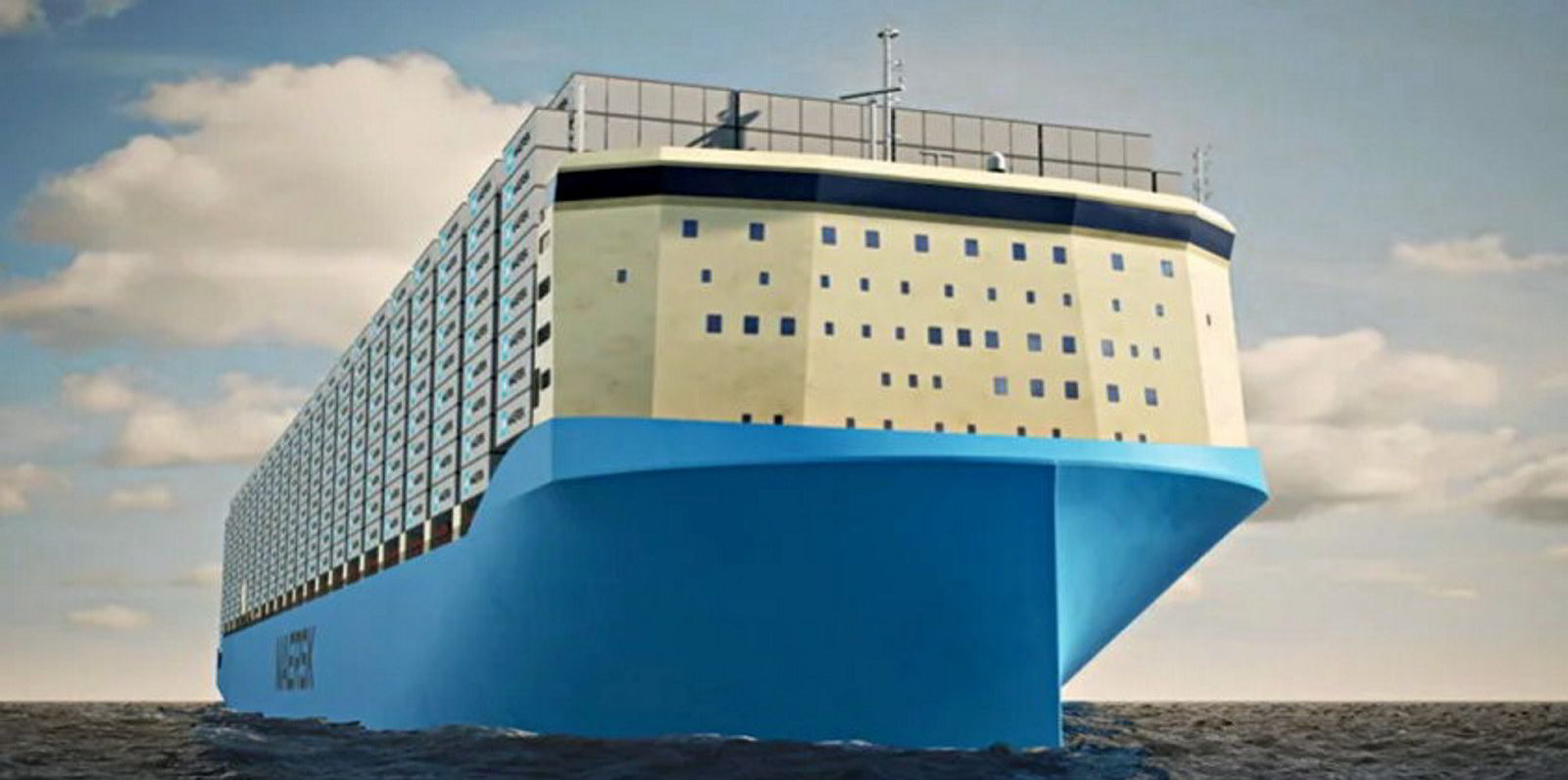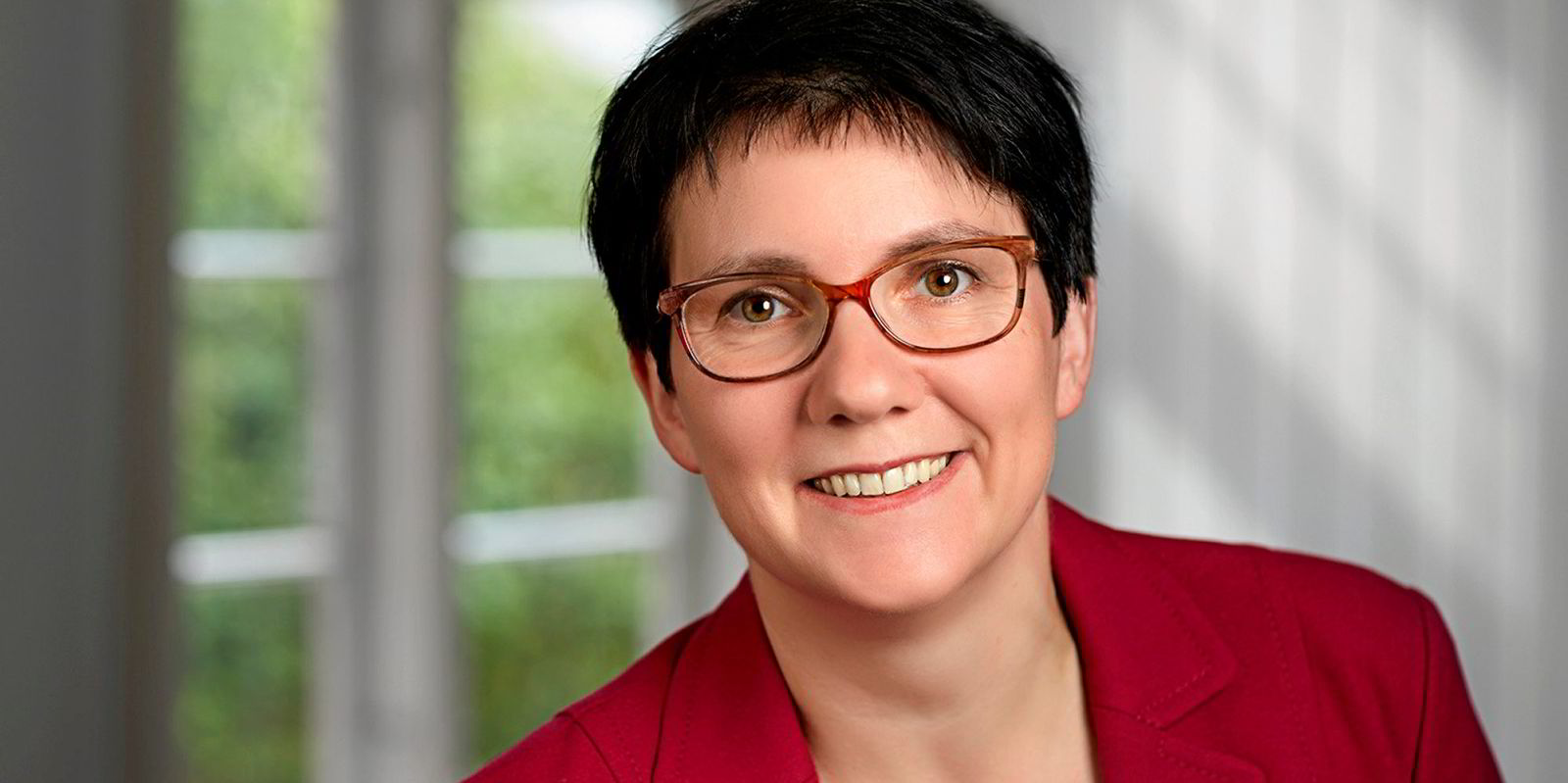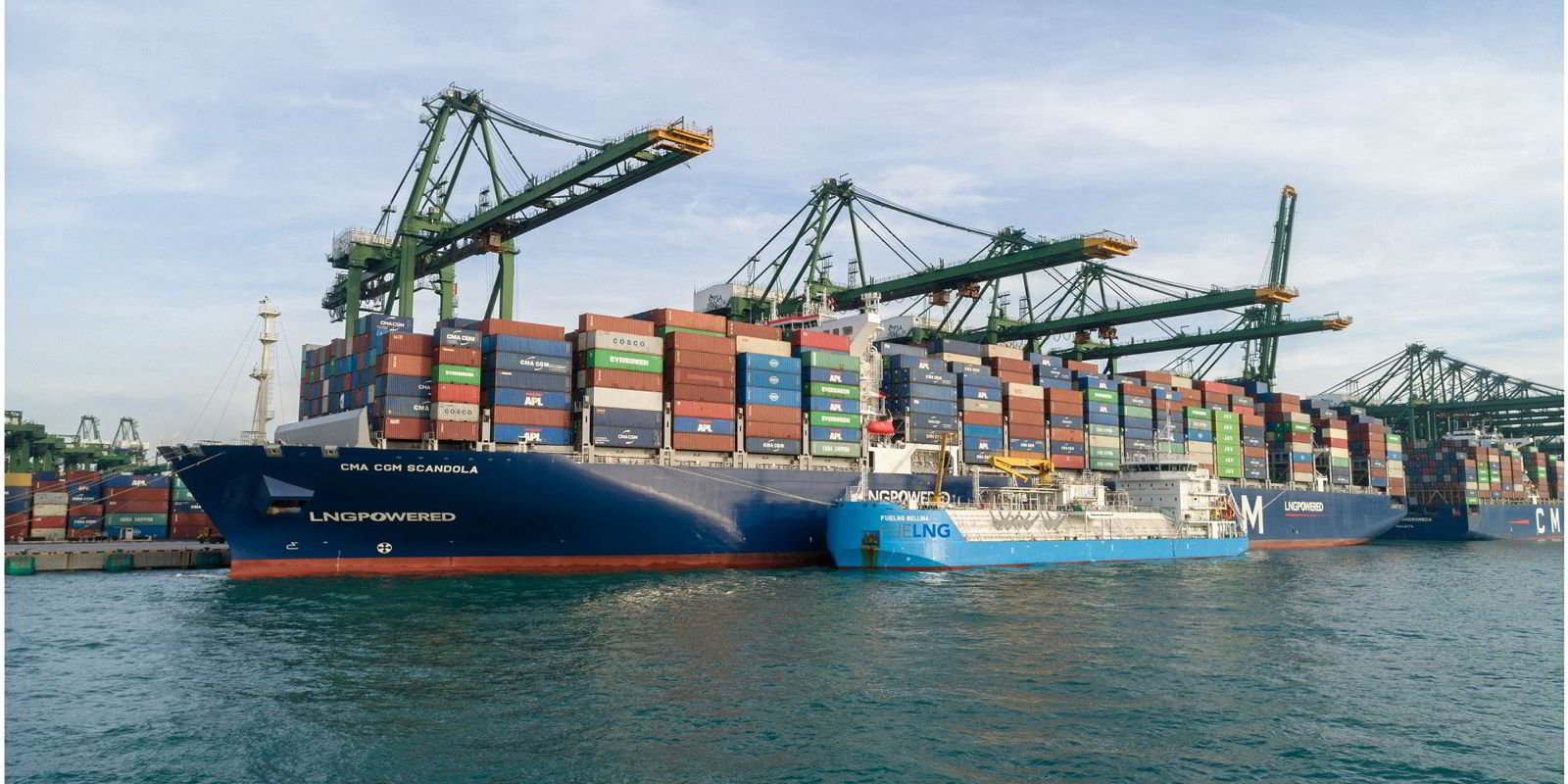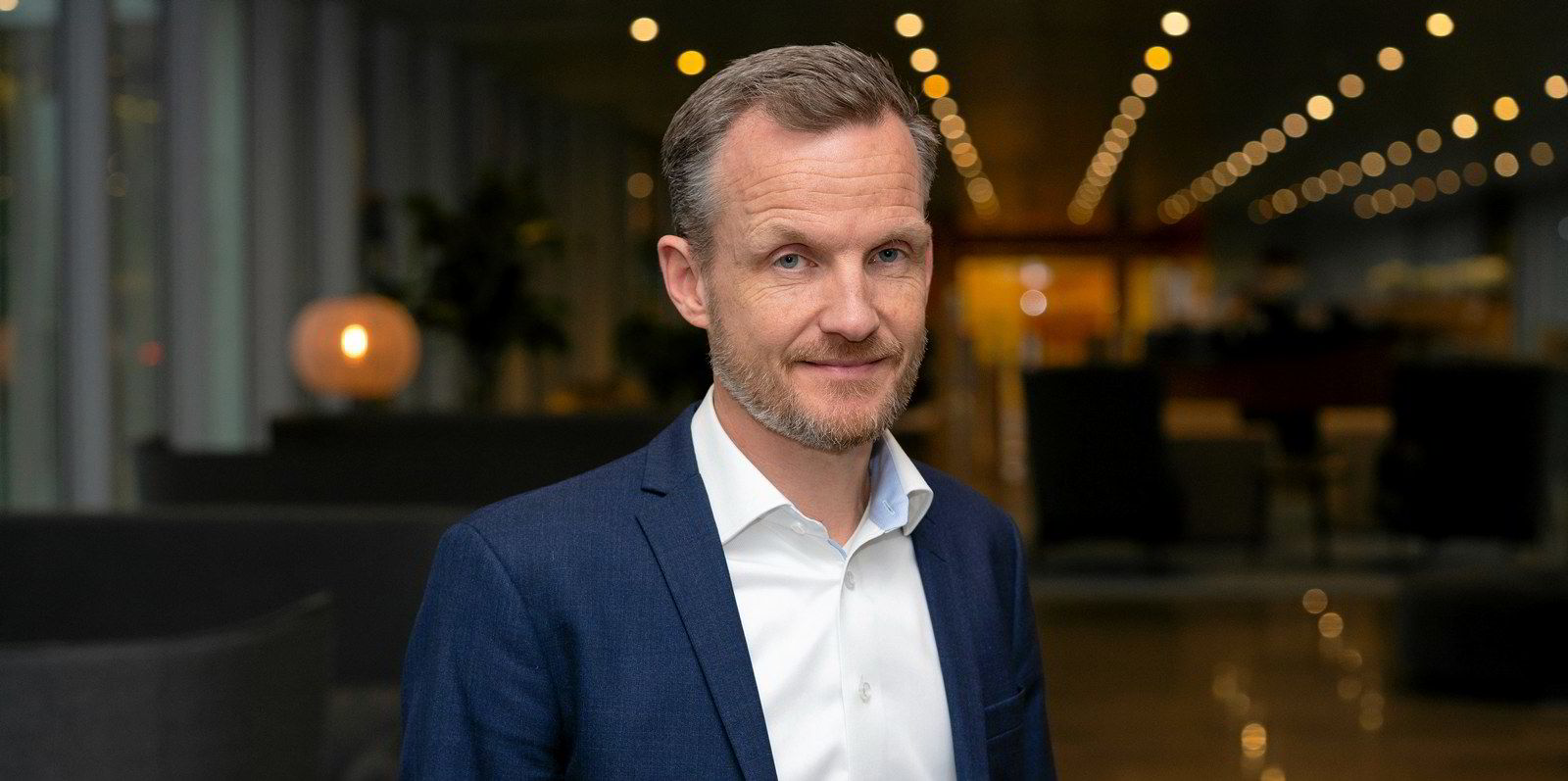Danish liner giant AP Moller-Maersk is poised to splash out about $700m to boost its emerging methanol dual-fuelled, neo-panamax container ship newbuilding fleet to 12 vessels — by declaring four optional slots which it is holding at South Korea's Hyundai Heavy Industries.
Shipbuilding sources said the Danish liner company plans to ink the 16,000-teu newbuildings this month.
Maersk secured the options at the yard in 2021, when the company booked eight pioneering methanol-fuelled boxships for delivery dates between February and November 2024.
Pricing
These upcoming four newbuildings are set to lift the company's investments in methanol-fuelled 16,000-teu ships to $2.1bn.
Sources priced Maersk's optional container ships at $175m each — the same price as the company's earlier eight newbuildings. HHI is slated to deliver the quartet in 2025.
- Length: 350 metres
- Breadth: 53.5 metres
- Capacity: 16,000-teus
- Features: Bow-mounted crew and accommodation block, and aft-mounted funnel set to one side to provide more cargo space
- Price: $175m each
Officials at HHI declined to comment when contacted, citing contract confidentiality.
When contacted, a Maersk spokesman referred TradeWinds to the company's 24 August announcement on its initial eight newbuildings at HHI which references that the order includes four optional vessels. He said: "A decision about the options will be made in due time."
Maersk — which has also said it is looking at retrofitting some of its ships to burn methanol as a way of meeting its decarbonisation targets — previously said its methanol-fuelled newbuildings would replace more than 150,000 teu of boxship capacity that will leave the company’s managed fleet between 2020 and the first quarter of 2024.
Emissions savings
Based on the company's figures for its eight methanol-fuelled newbuildings, the 12 vessels could save about 1.5 million tonnes per annum of CO2 emissions if they are bunkered with green methanol.
In December, Maersk chief technical officer Palle Laursen said the "unique" design of the neo-panamax vessels would allow a 20% improved energy efficiency per transported container compared with the industry average.
In addition to neo-panamax vessels, Maersk is also due to take delivery of one methanol-fuelled 2,200-teu boxship newbuilding from Hyundai Mipo Dockyard in mid-2023. The feeder vessel is priced at more than $45m.
Maersk has now secured the 10,000 tonnes of green methanol it needs for this vessel from its partner renewable energy company European Energy and its subsidiary REintegrate, which are setting up a new facility in Denmark to produce about 10,000 tonnes of carbon-neutral e-methanol.
Bunker volumes
But company officials have admitted that the challenge is to find the bunker volumes for the larger vessels.

The Danish shipowner is the only liner company that has opted to use methanol as alternative fuel for large container ships with other owners opting for LNG.
Global supply of methanol is currently around 150 mtpa.
Maersk has said its eight 16,000-teu ships will need about 350,000 tpa of methanol bunkers. Adding another four ships will bump up this demand to 525,000 tpa.
Additionally, brokers have highlighted the need for new supply infrastructure and pointed out that methanol has a low energy density so will need twice the volume as fuel oil bunkers to cover the same range.
Pricing is another issue.
Speaking in October, Maersk's head of decarbonisation Morten Bo Christiansen said green methanol is currently three to five times more expensive than very low-sulphur fuel oil (VLSFO). But added he is confident costs will reduce to between two and three times that of VLSFO.
He said that while doubling Maersk's $5bn to $6bn annual fuel bill sounds very expensive there are customers willing to share the cost for green shipping.







